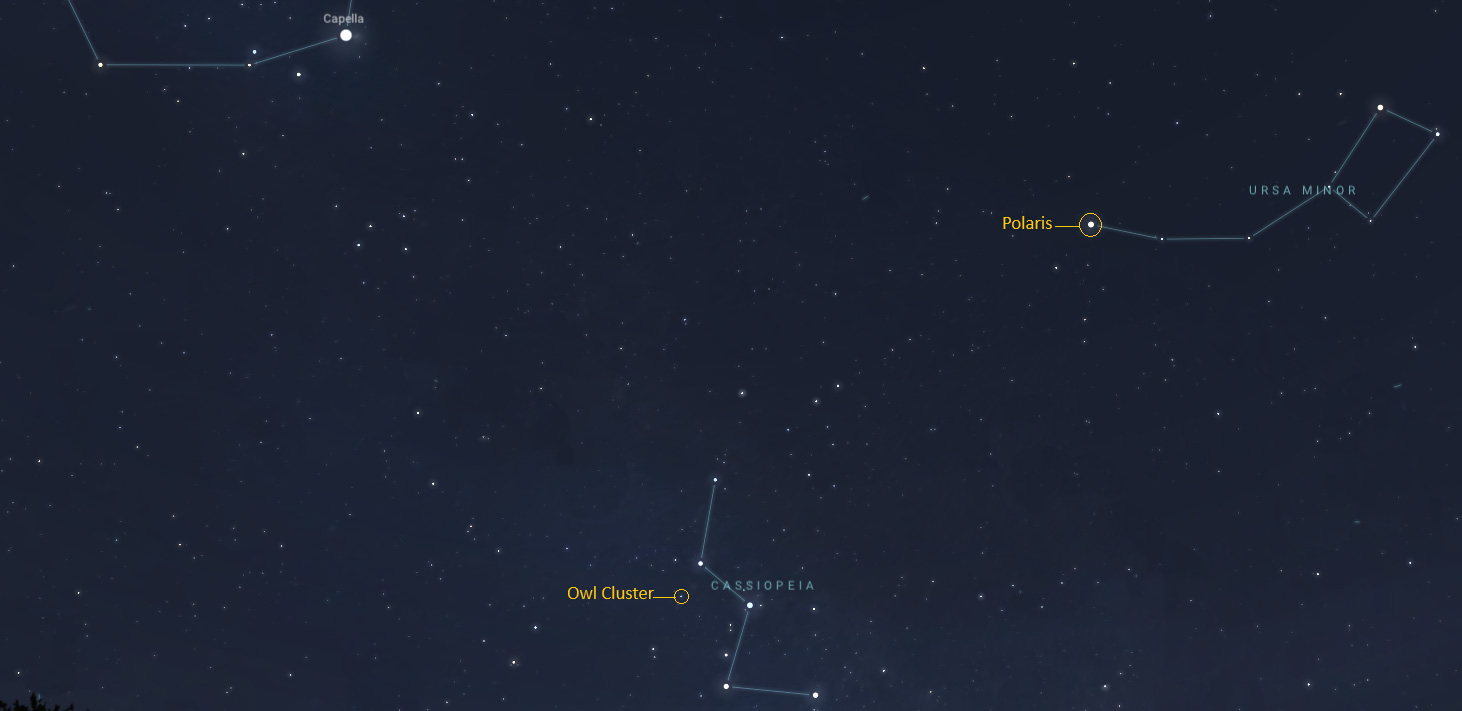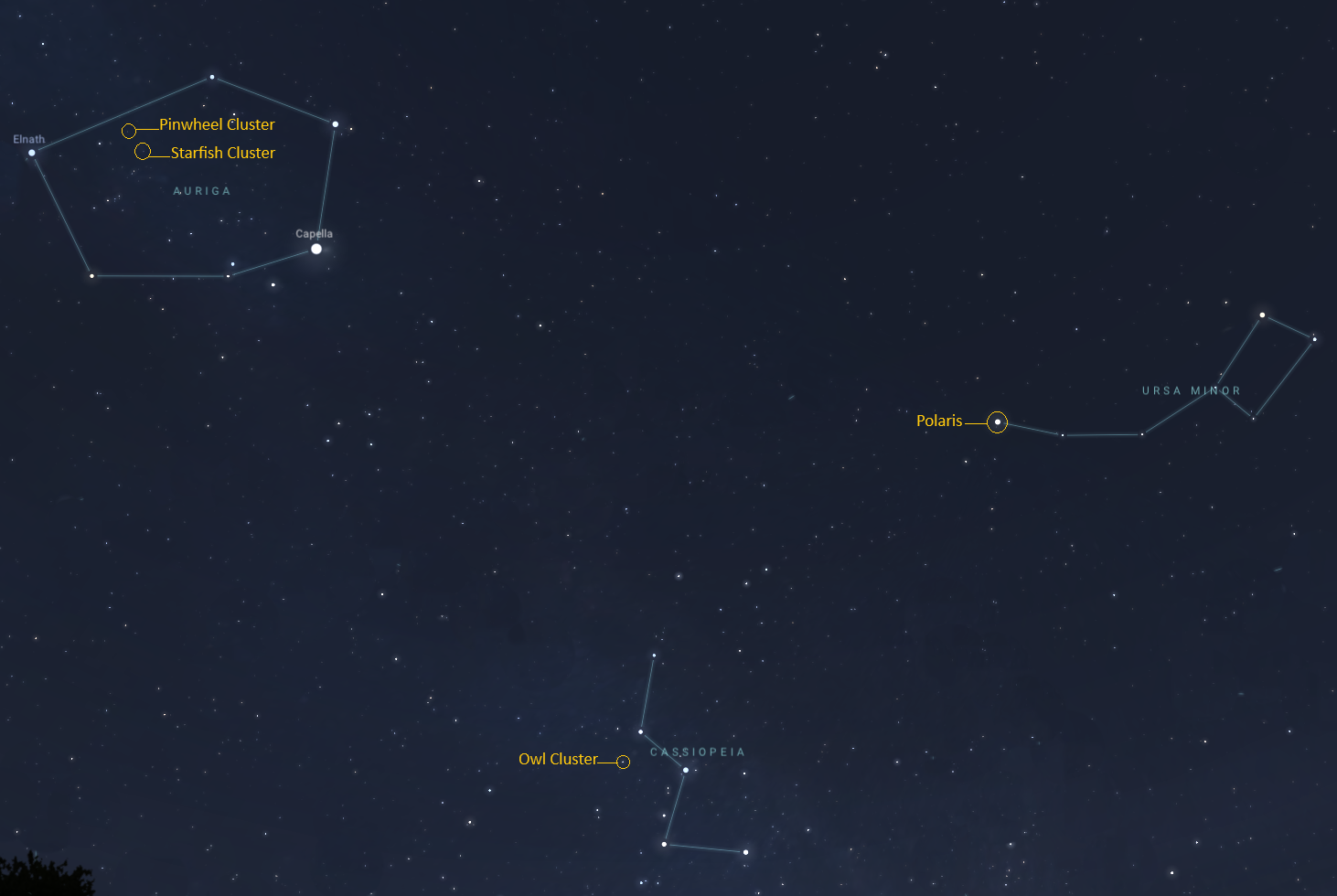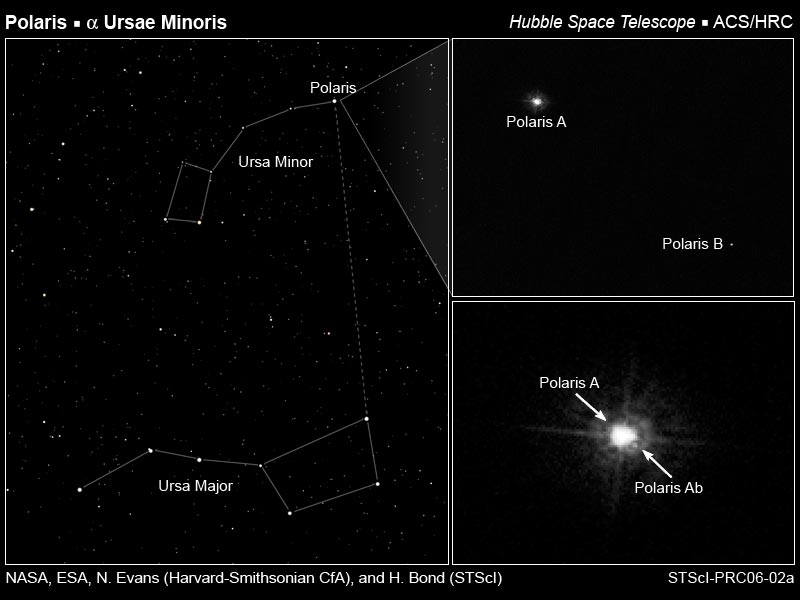
Constant Companions: Circumpolar Constellations, Part I
February 2024 :
Winter in the northern hemisphere offers crisp, clear (and cold!) nights to stargazers, along with better views of several circumpolar constellations. What does circumpolar mean when referring to constellations? This word refers to constellations that surround the north and south celestial poles without ever falling below the horizon. Depending on your latitude, you will be able to see up to nine circumpolar constellations in the northern hemisphere. Today, we’ll focus on three that have gems within: Auriga, Cassiopeia, and Ursa Minor. These objects can all be spotted with a pair of binoculars or a small to medium-sized telescope.

The counterclockwise circumpolar constellations Auriga, Cassiopeia, and Ursa Minor in the night sky, with four objects circled in yellow labeled: Pinwheel Cluster, Starfish Cluster, Owl Cluster, and Polaris. Credit: Stellarium Web
- The Pinwheel Cluster: Located near the edge of Auriga, this open star cluster is easy to spot with a pair of binoculars or small telescope. At just 25 million years old, it contains no red giant stars and looks similar to the Pleiades. To find this, draw a line between the stars Elnath in Taurus and Menkalinan in Auriga. You will also find the Starfish Cluster nearby.
- The Owl Cluster: Located in the ‘W’ or ‘M’ shaped constellation Cassiopeia, is the open star cluster known as the Owl Cluster. Sometimes referred to as the E.T. Cluster or Dragonfly Cluster, this group of stars never sets below the horizon and can be spotted with binoculars or a small telescope.
- Polaris: Did you know that Polaris is a triple star system? Look for the North Star on the edge of Ursa Minor, and with a medium-sized telescope, you should be able to separate two of the three stars. This star is also known as a Cepheid variable star, meaning that it varies in brightness, temperature and diameter. It’s the closest one of its kind to Earth, making it a great target for study and conceptual art.

A black and white image from the Hubble Telescope of the Polaris star system, showing three stars: Polaris A, Ab, and Polaris B. Credit: NASA, ESA, N. Evans (Harvard-Smithsonian CfA), and H. Bond (STScI)
Up next, catch the King of the Planets before its gone for the season with our upcoming mid-month article on the Night Sky Network page through NASA's website!



